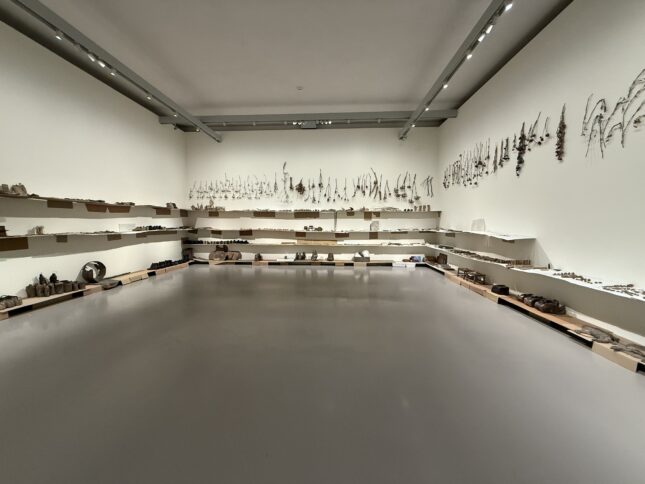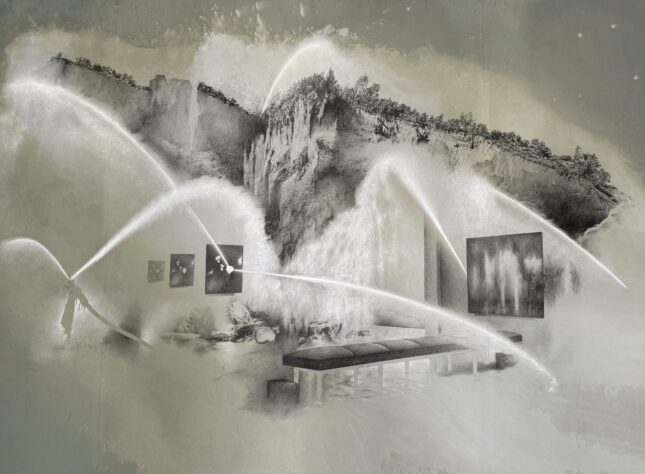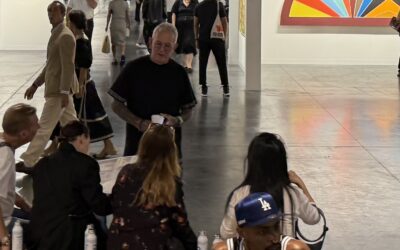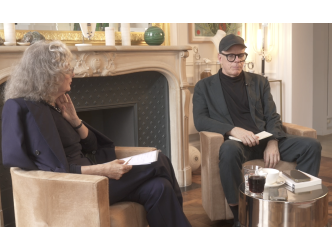Palazzo Grassi
Stepping into the world of Tatiana Trouvûˋ (born in 1968) means entering her ãmagical mind,ã tracing the contours of her unconscious, embracing her singular imagination. In Venice, the Franco-Italian artist has completely transformed the majestic spaces of the Palazzo Grassi into a treasure box of dreams, on view through January 4, 2026.

Across the buildingãs 5,000 square meters, she has pierced some walls and sealed off others, radically altering the visitorãs path. Trouvûˋ tells her storyãor rather, whispers itãin subtle gestures: through her monumental compositions (entirely drawings), her sculptures and trompe-lãéil installations of seemingly mundane objects (which she calls ãGuardiansã), as well as a re-creation of her studio.
Supernatural
When interviewed, she speaks in a quiet voice, with a faintly dragging cadence, as she reveals the roots of her creative drive, which lie unexpectedly in Africa. Until the age of 16, she lived in Senegal, where her father taught architecture. It was there she first encountered the captivating tales of traveling griots who spun stories of the supernatural. (See here and here an other report about Tatiana Trouvûˋ)

Today, Trouvûˋ is best known for her maps, or rather utopian cartographies, charting the unchartable. At the Centre Pompidou in 2022, she mounted a stunning solo exhibition titledô ãAtlas of Disorientation.ã At Palazzo Grassi, her approach is different.
James Lingwood
ãI donãt know another artist with such a deep sense of experimentation and such technical brilliance,ã says an admiring James Lingwood, the British curator of the exhibition, who collaborated with Trouvûˋ on the project for two years.
Her Guardians

Letãs begin with her ãGuardians.ã Trouvûˋ loves to play, especially in her choice of materials. You might think youãre looking at an ordinary padded vinyl chair, straight out of the 1970s, with a cushion folded in two. ButãÎ the label unmasks the illusion. The chair is sculpted from onyx, the cushion from marble.
ãI started making the ãGuardiansã for group shows. It was my way of occupying the space and of observing other peopleãs work. Itãs also a way of acknowledging the presence of museum guards,ã says the artist, who is also using these objects to ãwatch overã the exhibition galleries.
Bleach and papers

The other major body of work presented in Venice is drawing. But hers has little to do with conventional definitions of works on paper. These large-scale, vividly colored sheets, mounted on canvas, might float freely in the middle of the room. ãI like getting lost even more when I work big,ã explains Trouvûˋ.
She is fascinated by the transformation of materials. Here, she attacks the paperãs surface with bleach. From the colorãs dissolution, forms begin to emerge.
Turbulent atmosphere

Halos, clouds or mountains from which she builds her compositions. These then give rise to forests, architectural fragments, objects. But no humans. Since 2013, she has called these large drawingsô ãles dessouvenus,ã which she says comes from a Breton term for those who have lost their memory.
ãThe use of bleach creates a turbulent atmosphere, over which she draws in pencil different images of a world felt to be in ecological collapse,ã observes Lingwood. ãThey combine indoor and outdoor spaces.ã

Like in the now-familiar scenes of natural disaster or war, in which we see homes gutted from the destruction, Trouvûˋãs drawings expose a devastated intimacy. A premonition?
Through January 4, 2026.ô www.pinaultcollection.com/palazzograssi/fr
Support independent news on art.
Your contribution : Make a monthly commitment to support JB Reports or a one-off contribution as and when you feel like it. Choose the option that suits you best.
Need to cancel a recurring donation? Please go here.
The donation is considered to be a subscription for a fee set by the donor and for a duration also set by the donor.




